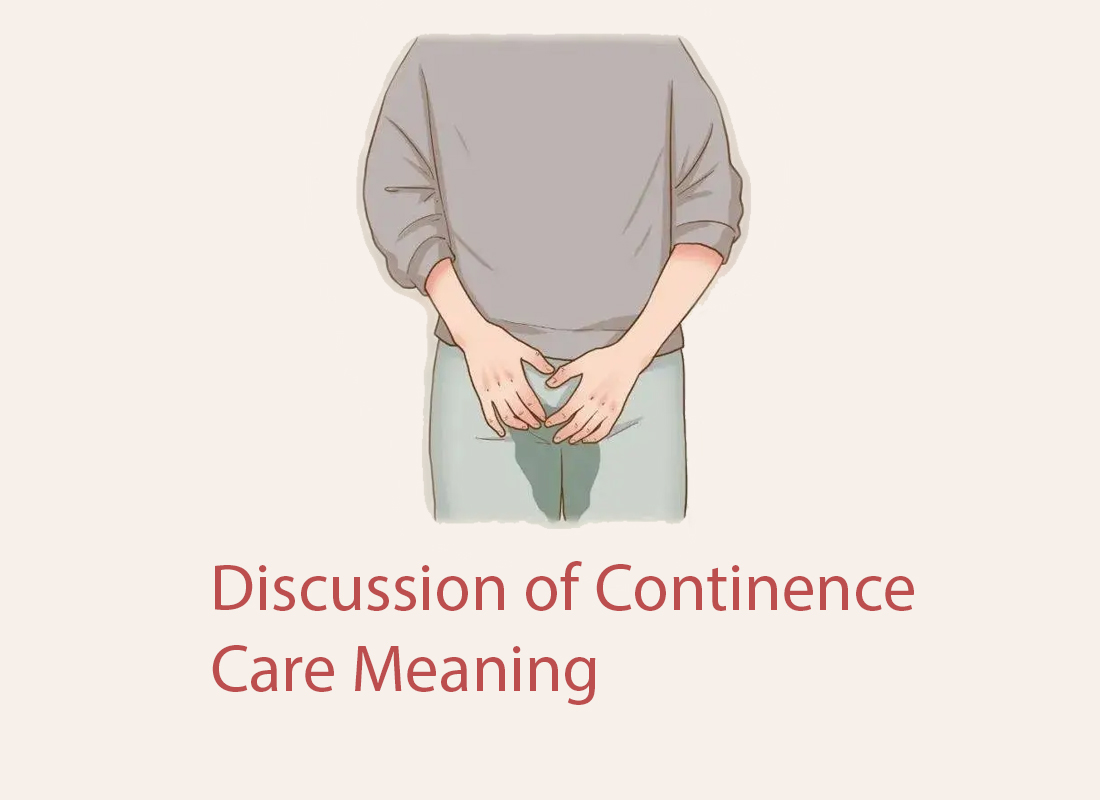TEl: +86-13148388090
Fax:+86-571-88616515
Discussion of Continence Care Meaning
Author: admin / 2024-10-01There are people who cannot voluntarily control their urinary discharge. So it is important for people to receive continence care. In this article we will discuss continence care meanings and the medical products available for continence care. 
Urinary continence is the ability to voluntarily control urinary discharge. Urinary incontinence refers to the loss of bladder control. People with urinary incontinence feel embarrassed when they leak urine by accident and therefore will sometimes avoid engaging in normal activities. Fortunately urinary continence care is available to stop or control incontinence.
When the problem is mild you occasionally leak urine when you cough or sneeze; if it is severe you don’t get to the toilet in time when there’s a sudden and strong urge to urinate.
Male urinary system: Male urinary system includes the kidneys, ureters, bladder and urethra. The kidneys filter waste and liquids from the blood and produce urine. Urine enters the bladder through narrow tubes from the kidneys. These tubes are called ureters. The bladder stores urine until it is time to urinate. Urine is removed from the body through the urethra (basically a small tube).
Female urinary system: Female urinary system includes the kidneys, ureters, bladder and urethra. The kidneys filter waste and liquids from the blood and produce urine. Urine enters the bladder through narrow tubes from the kidneys. These tubes are called ureters. The bladder stores urine until it is time to urinate. Urine is removed from the body through the urethra (basically a small tube).
Symptoms of urinary incontinence
A. Stress incontinence.
When you cough, sneeze, laugh, exercise or lift heavy things there’s pressure exerted on your bladder. This pressure exertion causes urine leaks.
B. Urge incontinence.
Due to incontinence, involuntary loss of urine occurs whenever you feel a sudden, intense urge to urinate. You may also experience frequent urination, including during the night. The cause of urge incontinence include infection and a severe condition such as a neurological disorder or diabetes.
C. Overflow incontinence.
Because your bladder does not empty completely, there is frequent or constant dribbling of urine.
D. Functional incontinence.
If you have a physical or mental impairment such as severe arthritis, you may have difficulty making it to the toilet in time.
E. Mixed incontinence.
A combination of stress incontinence and urge incontinence.
Causes of urinary incontinence
1) Pregnancy. During pregnancy you undergo hormonal changes, and the fetus weight increases. Due to these stress incontinence happens.
2) Childbirth. Muscles, nerves and tissues for bladder control can be damaged by vaginal delivery, resulting in incontinence.
3) Aging. Bladder muscle ages too, which impairs its ability to store urine. Also when we are older involuntary bladder contractions happens more frequently.
4) Menopause. Health of lining of the bladder and urethra is deteriorated after menopause; this aggravates incontinence.
5) Benign prostate hyperplasia (the prostate grows as men age).
6) Prostate cancer. Prostate cancer treatment sometimes has the side effect of incontinence.
7) Obstruction. Urinary tract tumors can hinder normal urine flow, leading to incontinence. Urinary stones in the bladder can sometimes cause urine leakage.
8) Damage to nerves that control the bladder, by diseases such as multiple sclerosis, Parkinson's disease, a stroke, a brain tumor or a spinal injury.
Continence care meanings and means for continence care
The meaning of continence care refers to the means available for supporting a person with incontinence problems, such as incontinence pads, catheters, stoma bags, convenes and commodes. Here we focus on catheters, training and behavioral adoption.
1) Medical treatment
A. Indwelling Catheters
An indwelling catheter is a flexible tube placed in your bladder. An "indwelling" catheter stays in your bladder all day and night. A balloon holds the tube in your bladder. Indwelling catheters drain urine into a bag outside the body.
B. Catheters for Intermittent Catheterization
Intermittent catheterization is also called "in and out" catheterization. A catheter is inserted in the urethra 3 to 5 times a day. You can get catheters and other supplies, such as lubricant, packaged together. These packages are helpful if you need to use the catheter at work.

Image of an actual hydrophilic coated intermittent catheter
C. Medications can be prescribed by your doctor to help with bladder control problems. Talk with your doctor about what medication works for you best.
2) Bladder control training
Pelvic muscle exercise (also known as Kegel exercises) strengthens the muscles that support the bladder, which improves your ability to hold urine in the bladder and avoid leaks.
3) Behavioral and lifestyle changes
If you can try to adopt a healthier lifestyle the benefits are significant. Losing weight, quitting smoking and alcohol, choosing water instead of other drinks, and limiting amount of drinks taken before bedtime can mitigate bladder problems. A person with incontinence is advised not to lift heavy objects. There are bladder control products available too, such as disposable briefs or underwear, furniture pads, and urine deodorizing pills.
People with urinary incontinence feel embarrassed when they leak urine by accident. For this reason the medical industry has come up with urinary continence care, for instance catheterization, which mitigates the problem; you can insert a catheter (a soft tube) into your urethra several times a day to drain your bladder. There are disposable and reusable catheters available on the market. Expertise advice on how to choose and use appropriate disposable catheters is available on website of specialized catheter manufacturer: https://www.bevermedical.com


